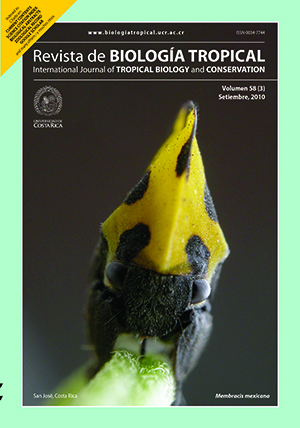Abstract
A transformation of any natural ecosystem to an agricultural or forest system leads to an important soil modification, not only in the total carbon pool, but also in the carbon associated to the micro-bial biomass. This way, carbon quantification on soil quality is important for the determination of impacts of agricultural practices and land use changes. The aim of this study was to the determine, through the selective inhibition technique, the fungal and bacterial biomass, and fungal-to-bacterial ratio (F:B) in pine plantations (Pinus caribaea var. hondurensis), to establish if these parameters are sensible indicators of changes in the car-bon content in Uverito soils (Venezuela). Furthermore, the inhibitor additivity ratio (IAR) and total combined inhibition (TCI) were carried out to determine if the antibiotics caused non-target inhibition. The quantification of fungal and bacterial biomass was carried out by using of cyloheximide as fungal inhibitor, and streptomycin and chloranphenicol as specific bacterial inhibitors. This research evidences that this land use change exerted a significant effect on soil microbial biomass, and shows that in pine plantations there is a dominance of the fungal component, in contrast to the native savanna, in which the bacterial biomass dominates. The substitution of native savanna by pine plantation in Uverito promotes a major soil carbon sequestration. The values of the inhibitor additivity ratio (IAR) as for native savanna as pine system, were both >1.0. The total combined inhibition (TCI) was smaller in the pine systems, from which it is possible to infer that a high proportion of microbial biomass was affected by the combination of the inhibitors.
Comments

This work is licensed under a Creative Commons Attribution 4.0 International License.
Copyright (c) 2010 Revista de Biología Tropical






